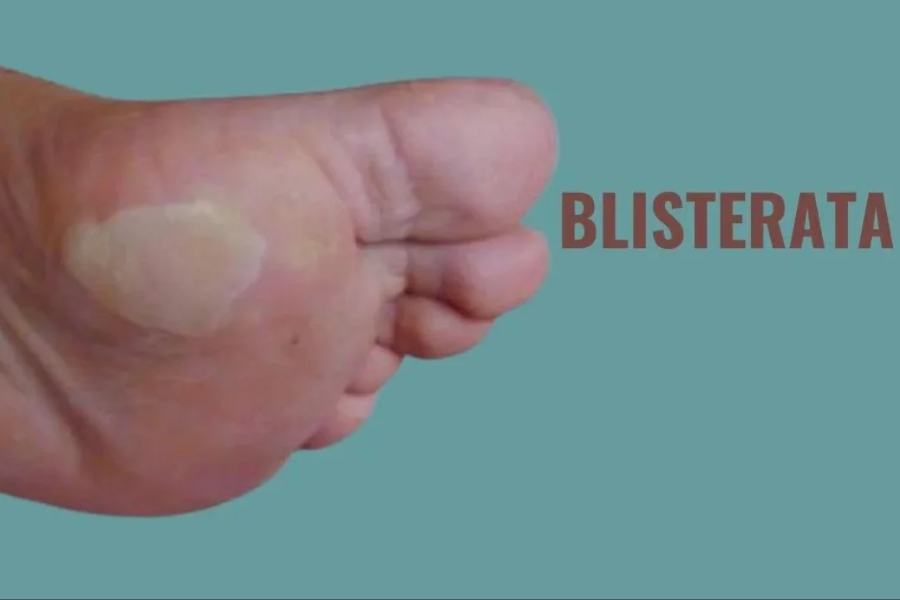Blisterata is a relatively lesser-known skin condition but can be highly disruptive and painful. Characterized by fluid-filled blisters, Blisterata often impacts the hands, feet, and legs, posing challenges particularly for athletes, hikers, and healthcare providers who encounter or need to manage such skin irritations. This guide provides an in-depth look at Blisterata, covering everything from what causes it to how it can be effectively treated and prevented.
Whether you’re an athlete, an outdoor enthusiast, or a medical professional, understanding Blisterata’s origins, symptoms, treatments, and preventative methods can be essential for ensuring quick recovery and minimizing complications. This article aims to equip you with all the knowledge you need to manage and avoid Blisterata effectively.
Overview of Causes of Blisterata
Blisterata can develop for various reasons, with each cause contributing differently to blister formation. Recognizing these triggers can support effective prevention and treatment.
Friction
Friction is a primary contributor to Blisterata, particularly for those who engage in high-impact activities like running or hiking. Ill-fitting shoes, tight gloves, or poorly chosen sports gear can create repetitive friction that irritates the skin. This irritation can result in layers of skin separating and accumulating fluid, forming blisters.
Burns
Burns—whether thermal, chemical, or from prolonged sun exposure—can also trigger Blisterata. The blistering response acts as a protective mechanism, aiming to heal damaged tissue beneath the skin. Individuals exposed to high heat or harsh chemicals must take special precautions to avoid burns.
Allergies and Infections
Blisters can also arise from allergic reactions (e.g., to poison ivy, metals, or cosmetics) or infections caused by bacteria and fungi. This inflammatory response is common in individuals with sensitive skin or weakened immune systems, as well as in those exposed to unclean environments.
Identifying Symptoms and Confirming Diagnosis
Recognizing Blisterata symptoms and obtaining a proper diagnosis are critical to timely treatment.
Blister Characteristics
Blisterata blisters usually appear as small, fluid-filled sacs with clear or cloudy liquid, accompanied by redness, swelling, and localized pain. Blisters that rupture may leave behind open sores that are prone to infection.
Diagnosis
Healthcare providers typically diagnose Blisterata by visually examining the blisters and discussing any relevant activities or medical history. If an infection or unusual cause is suspected, a doctor may recommend further testing, such as a skin swab or blood test, to pinpoint the underlying cause.
Treatment Approaches for Blisterata
Treatment for Blisterata can vary from simple home remedies to medical procedures, depending on the severity of symptoms.
Home Care Solutions
For mild cases, try the following:
- Keep Blisters Clean: Clean affected areas gently with soap and water.
- Reduce Friction: Cover the blistered area with bandages or padding to prevent further irritation.
- Apply Antibiotic Ointments: If a blister bursts, use an antibiotic ointment to lower the risk of infection.
- Elevate and Rest: Elevation can help reduce swelling and expedite healing.
Medical Interventions
For more severe cases, professional medical treatment may be necessary:
- Drainage: In cases where a blister is large or painful, a doctor may use sterile equipment to safely drain it.
- Medication: If a blister is infected, a doctor may prescribe antibiotics or antifungal treatments.
- Specialized Dressings: Advanced dressings may be applied by a healthcare provider to promote faster healing and pain relief.
Knowing when to seek professional care is crucial, particularly if a blister shows signs of infection (e.g., increasing pain, redness, warmth, or pus).
Prevention Tactics
Prevention can go a long way in avoiding the discomfort and complications associated with Blisterata.
Footwear
Wearing shoes that fit well and offer adequate support is key to preventing friction blisters. Athletes and outdoor enthusiasts should invest in activity-appropriate footwear and break in new shoes gradually.
Hygiene
Maintaining good hygiene by keeping skin dry and clean can reduce the chances of blisters forming. For high-friction activities, moisture-wicking socks or powders can also be beneficial.
Protective Gear
Using protective gear, like gloves, padded insoles, or blister-prevention tape, can help shield high-risk areas. Applying lubricant to areas that experience repeated friction may also prevent blisters.
Potential Complications and Recovery Guidelines
If not properly managed, Blisterata can lead to complications such as:
- Infection: Blisters that aren’t properly cared for may become infected, leading to pain, warmth, and pus.
- Scarring: Popping blisters prematurely or not caring for open sores may result in scarring, especially in those prone to keloid formation.
- Delayed Healing: Continued friction, poor hygiene, or certain health conditions can prolong healing.
To ensure smooth recovery, keep blisters clean, avoid friction, and seek medical care if signs of infection appear.
Conclusion
Blisterata can be a significant inconvenience but is manageable with the right approach. By understanding its causes, recognizing symptoms, and taking steps for treatment and prevention, you can reduce the impact of Blisterata on your daily life.
Taking preventive measures, such as wearing proper footwear, practicing good hygiene, and using protective gear, can significantly minimize the chances of blisters. If symptoms persist or complications arise, seek professional medical advice to ensure the best possible care and recovery.
Stay proactive, and remember that your skin’s health is essential to your overall well-being.
Frequently Asked Questions
What causes Blisterata?
Blisterata often results from repetitive friction, pressure, heat exposure, or contact with irritants. Activities that involve extended use of tools, ill-fitting shoes, or prolonged physical exertion can increase the risk.
How can I treat a blister at home?
Start by cleaning the area with mild soap and water. Protect the blister from friction with bandages or padding. Apply an antibiotic ointment if the blister bursts and avoid popping it to reduce infection risk.
When should I consult a doctor?
Seek medical care if a blister is large, painful, or appears infected (e.g., has redness, warmth, or pus). If you have conditions like diabetes that could complicate healing, contact a healthcare provider.
What steps help prevent Blisterata?
Use well-fitting shoes, maintain hygiene, and utilize protective gear for high-friction activities. Moisture-wicking materials, lubricants, and powders can also help reduce friction.
What complications can arise from untreated blisters?
Without proper care, blisters can become infected or lead to scarring and delayed healing, especially if they are exposed to further friction or contamination.
Explore In-Depth Features and Insights at VentsMagazine


